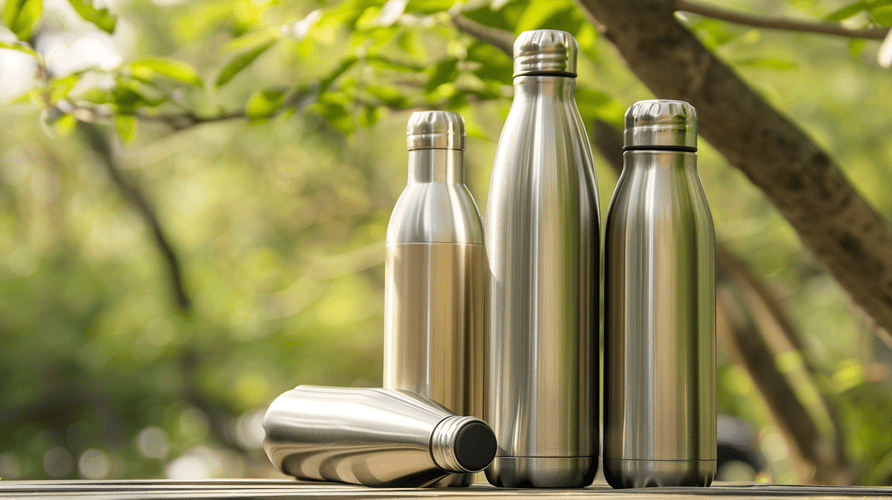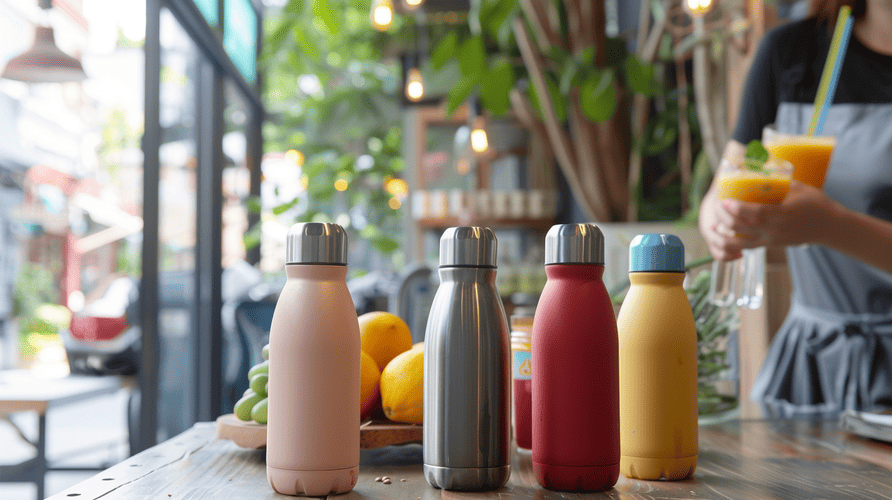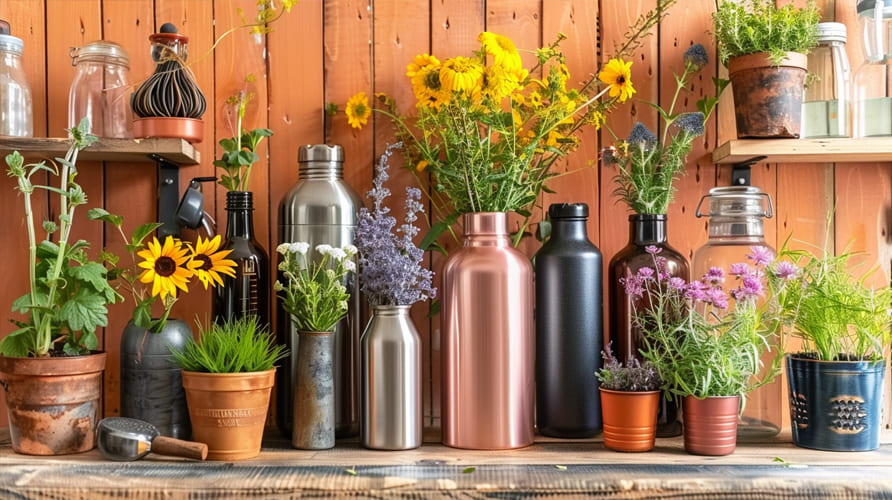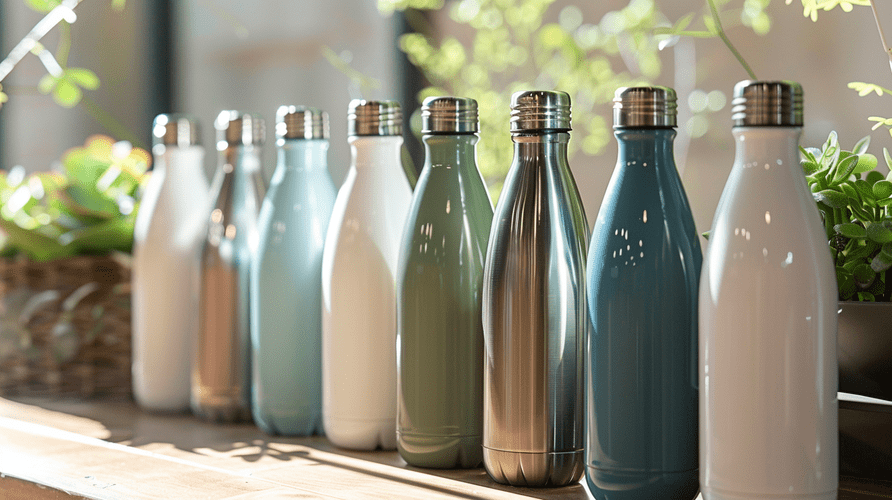Are you tired of your icy drink turning lukewarm too quickly? Finding a bottle that truly keeps your beverage cold for hours can be a real challenge, leading to disappointment and a less refreshing experience.
The best insulated water bottles use double-wall vacuum insulation technology to keep drinks cold for extended periods, often up to 24 hours. High-quality food-grade 18/8 stainless steel is a top material choice, ensuring durability and temperature retention.

I know how crucial it is for my clients – brand owners, importers, and wholesalers – to source top-notch products. You need to understand the nitty-gritty of what makes an insulated bottle effective. It's not just about the claims; it's about the science and materials that deliver on those promises. Let's explore what makes these bottles work and what to look for.
What water bottle keeps ice for 72 hours?
Frustrated with ice melting before you're halfway through your day? It's a common problem, especially when you need that drink to stay frigid. You're looking for a bottle that lives up to its long-lasting cold claims.
Some stainless steel water bottles, like the Earthwell Kewler™ series, claim to keep water iced for up to 72 hours. Other brands also offer bottles designed to keep drinks cold for 72 hours, often featuring triple-wall or advanced vacuum insulation.

As someone in the B2B wholesale business for stainless steel drinkware, I've seen many claims. For Mark Shenng, a company owner in Canada who buys from China and Vietnam, understanding these specifics is vital. He's sensitive to quality and needs products that perform. While 24-hour cold retention is a strong industry standard for high-quality double-wall insulated stainless steel bottles, the 72-hour mark is a premium feature offered by some. Mark needs to look for bottles explicitly stating this capability, often backed by specific insulation technologies like triple-wall vacuum insulation. He should also inquire about the testing conditions for these claims.
Understanding "72-Hour Ice Retention" Claims
When a bottle claims to keep ice for 72 hours, several factors are at play:
- Insulation Technology: This is paramount.
- Double-Wall Vacuum Insulation: The most common and effective method. Two walls of stainless steel with a vacuum in between prevent heat transfer.
- Triple-Wall Insulation: Some high-performance bottles add an extra layer, sometimes copper, to further reduce temperature change.
- Lid Construction: A well-sealed, insulated lid is crucial. Heat can escape or enter through the lid if it's not designed to complement the bottle's insulation.
- Starting Conditions:
- Pre-chilling the bottle: Filling the bottle with ice water for a few minutes before adding your drink can help.
- Amount of Ice: More ice will generally last longer.
- Ambient Temperature: A bottle in scorching heat will have a tougher job than one in mild conditions.
What to Ask Suppliers Like Me (Aries Hua, Icobottle)
If Mark were sourcing from Icobottle for such a product, I'd advise him to ask:
| Feature Category | Specific Questions for Suppliers | Why It Matters for 72-Hour Performance |
|---|---|---|
| Insulation | What specific insulation technology is used (double, triple-wall)? | Determines the primary barrier against heat transfer. |
| Is there an additional copper lining for insulation? | Copper can enhance thermal radiation reflection. | |
| Lid | Is the lid insulated? What is its design? | Prevents temperature loss/gain through the opening. |
| Material Quality | Is it 18/8 (SUS304) food-grade stainless steel? | Ensures durability, rust-resistance, and no flavor transfer, maintaining the purity of the cold drink. |
| Testing Standards | Under what conditions was the 72-hour claim tested? | Provides context to the claim (e.g., amount of ice, ambient temperature). |
| Certifications | Do you have relevant safety and quality certifications? | Addresses Mark's pain point about certificate fraud and ensures product safety. |
For a procurement officer like Mark, who understands sales but lacks deep technical expertise, clear answers to these questions are essential. He needs reliable products that won't lead to customer complaints or missed sales due to underperformance. While a 72-hour ice retention is a significant claim, it is achievable with the right construction and materials.
Which insulated cup keeps ice the longest?
Searching for a cup that genuinely keeps ice frozen all day? It's frustrating when your drink dilutes quickly. You need a reliable cup that maintains that icy chill for hours on end.
Insulated cups using double-wall vacuum insulation, typically made from stainless steel, are designed to keep ice longest. Some tests show brands like Simple Modern and RTIC performing very well, sometimes outperforming more expensive brands in ice retention tests.

For someone like Mark, who is quality-sensitive but also seeks competitive pricing, knowing which features contribute to longevity is key. It’s not always the most expensive cup that wins. I've learned that the effectiveness of an insulated cup in keeping ice longest hinges on a few core principles, similar to bottles, but with some nuances for cups.
Factors Determining Maximum Ice Retention in Cups
Cups, often with wider mouths and different lid types than bottles, have their own considerations for ice retention:
- Double-Wall Vacuum Insulation: This is the workhorse technology. The vacuum between the two stainless steel walls drastically minimizes heat transfer by conduction and convection.
- Material: 18/8 stainless steel is a common choice for its good insulation properties, durability, and resistance to rust.
- Lid Design: This is especially critical for cups.
- Seal Quality: A tighter-fitting lid prevents cold air from escaping and warm air from entering.
- Sipping Mechanism: Some lids have openings that can be fully sealed, while others might have permanent straw holes or slide openings that are less effective at maintaining temperature. The SIC brand, for example, was noted for a sliding top to open/close the drinking part.
- Surface Area and Volume: Larger cups with more ice will generally maintain cold longer. However, a very wide mouth relative to the volume could potentially allow for quicker temperature exchange if the lid isn't highly efficient.
- External Coating: While primarily for aesthetics and grip, some powder coatings might offer a marginal additional barrier, though the vacuum insulation does the heavy lifting.
Insights from Comparison Tests
Several informal and formal tests have been conducted to see which cups keep ice the longest:
| Cup Brand | Reported Ice Retention Performance |
|---|---|
| Simple Modern | Showed the most ice remaining after nearly 24 hours in one test, and was the only tumbler with ice after six hours in another. |
| RTIC | Had the most ice after 12 hours in one test and kept water feeling coldest after 8 hours in another, even outperforming more expensive brands. |
| Ozark Trail | Performed well in tests, keeping water colder for longer than some pricier brands; was a leader in both cold and hot water tests in one comparison. |
| SIC | Came in a close second in one 12-hour ice test, noted for its closable lid. |
| Yeti | While popular and performing decently, some tests showed it as middle-of-the-road or beaten by less expensive brands in specific ice retention duration. |
| Hydro Flask | Generally good performance in keeping beverages cold for hours due to TempShield double-wall vacuum insulation. |
As a supplier, I tell my clients like Mark that these tests highlight that brand name or price isn't the sole determinant of performance. Construction quality, lid design, and the integrity of the vacuum seal are critical. When sourcing, he should look for robust seals and clear information on the insulation technology. It's a balance of finding a product that meets his quality standards (avoiding issues like inefficient sales communication or certificate fraud) while remaining competitively priced for his Canadian market.
Which container would work best for keeping very cold water cold?
Tired of your refreshingly cold water warming up too fast? You need a container that locks in that chill. The key is understanding the features that make a difference.
The best containers for keeping very cold water cold are typically double-wall vacuum insulated stainless steel bottles. This design significantly reduces heat transfer, maintaining the water's temperature for many hours, often up to 24.

When advising clients like Mark, who need to source reliable products for rebranding and distribution, I emphasize looking beyond just the "insulated" label. The type of insulation, material quality, and even the design of the opening play significant roles. He needs to ensure his customers get a product that truly delivers on its promise of long-lasting cold.
Key Features for Optimal Cold Retention
To ensure water stays very cold for as long as possible, these features are crucial in a container:
-
Primary Insulation Method: Double-Wall Vacuum Insulation
- Mechanism: Two layers of stainless steel are separated by a vacuum. Since there's virtually no air or other matter in the vacuum, heat transfer through conduction and convection is drastically minimized. This barrier prevents the external ambient temperature from warming the cold contents and stops the cold from escaping.
- Effectiveness: This is the most critical feature for long-term temperature maintenance. Many bottles with this tech claim up to 24 hours of cold retention.
-
Material: High-Quality Stainless Steel
- Grade: 18/8 (or SUS304) food-grade stainless steel is the industry standard.
- Benefits:
- It's an excellent insulator itself, better than plastic or glass.
- Durable, rust-proof, and shatter-proof.
- BPA-free and doesn't leach chemicals, ensuring water tastes pure.
- Doesn't readily absorb heat.
-
Lid Design and Seal
- Insulated Lid: An often-overlooked aspect. The lid should also be insulated to prevent temperature exchange. Some high-performance bottles feature lids with additional insulation.
- Airtight Seal: A secure, leak-proof seal is essential not just to prevent spills, but also to maintain the internal temperature by stopping air exchange.
-
Mouth Opening Size
- Narrow vs. Wide: While a wide mouth is convenient for adding ice and cleaning, a narrower mouth might offer slightly better temperature retention as there's less surface area for potential heat exchange when open. However, a well-designed insulated lid can mitigate this.
-
Additional Considerations
- "Sweat-Free" Exterior: Properly vacuum-insulated bottles won't condensate on the outside, even with icy contents, because the outer wall doesn't get cold.
- Pre-Chilling: For maximum effectiveness, pre-chilling the bottle with ice water for a few minutes before filling it with your cold beverage can help lower the initial temperature of the inner wall.
Comparing Container Types:
| Container Type | Typical Cold Retention Performance | Key Strengths | Considerations for "Very Cold" Water |
|---|---|---|---|
| Single-Wall Stainless Steel | Poor; no significant insulation. | Lightweight, durable. | Will not keep water cold for long; the exterior will feel cold. |
| Double-Wall (Non-Vacuum) Plastic | Fair; some air insulation between walls. | Lighter than steel. | Better than single-wall, but not as effective as vacuum-insulated steel. |
| Foam Insulated | Fair to Good; depends on foam quality and thickness. | Can be effective. | Performance can vary; vacuum is generally superior for long durations. |
| Double-Wall Vacuum Insulated SS | Excellent; often 12-24 hours or more for cold. | Superior temperature retention, durable, no sweat, pure taste. | The gold standard for keeping water very cold. |
For Mark's business, focusing on double-wall vacuum-insulated stainless steel (18/8 grade) containers with well-fitting, ideally insulated lids is the best strategy. This ensures he's offering a product that genuinely keeps water very cold for extended periods, meeting his customers' expectations and reinforcing the quality of his rebranded products.
Conclusion
To keep drinks ice cold, choose double-wall vacuum insulated stainless steel bottles. Quality materials and good lid design are key for hours of chill.

